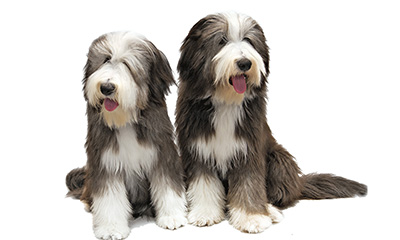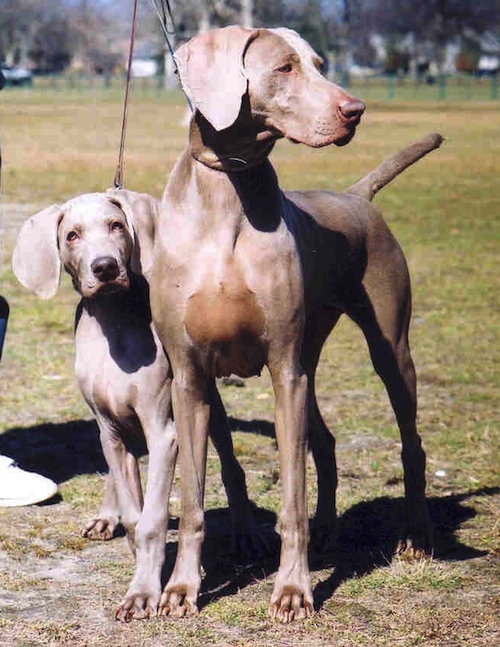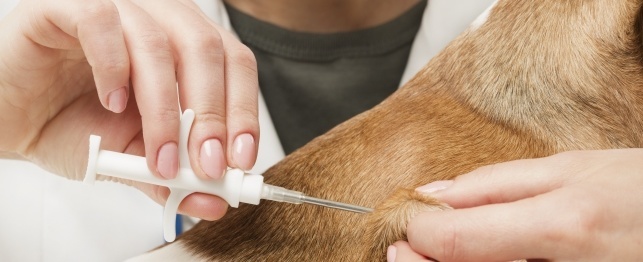Dog allergies are exaggerated reaction towards a harmless substance, which become visible through skin conditions and a number of other symptoms. Prompt detection of the allergic condition as well as the offending allergen help remedy this common condition seen in dogs.
SymptomsDog allergies manifest differently in dogs depending upon the type of allergy and the site affected. The symptoms of dog the different types of dog allergies are as follows:
Food Allergy - Primary symptoms is an itchy skin mainly found on the dog's face, feet, ears, forelegs, armpits and skin around the anus. It may also include chronic or recurrent ear infections, accompanied by hair loss, hot spots, excessive itching, and skin infections. It is important to note that bacterial infections occurring in dogs appear after discontinuing antibiotic treatment. In addition, like humans, dogs defecate more than necessary and moves bowel more than three times in a day. The final clue to this puzzle is that dogs with this type of allergy do not respond well with steroid therapy.
Flea Allergy - The most common findings in a dog with flea allergy includes scratching or itchiness, crusts and erosions of the skin, pimple-like bumps, loss of hair and hairs that appear broken. In severe cases, thickened skin with darkened areas appears. The easiest way to spot dog allergies of this nature is to look for hot spots along the dog's back and tail base. These sores appear as red, circular, oozing and very painful. The best way to find out is to detect the presence of fleas or flea feces, which are usually difficult to detect.
Inhalant Allergy - In humans, inhalation of offending allergens manifests as a respiratory problem, which include coughing, sneezing, a runny nose and watery eyes. However, this type of allergy causes severe and generalized itching in dogs. Dog allergies of this nature cause dogs to chew and scratch producing hair loss and inflamed areas on the skin. Inhalant allergy causes dogs to lick excessively and impart orange or reddish brown color on light colored hair and seen often on the dog's feet.
Contact Allergy - Dog allergies of this type presents similar reactions seen in people developing poison ivy. Typical signs include itchiness and red bumps or popular eruption. Itchiness or pruritis is often severe. This allergy also affects the paws and muzzle of dogs as well as the insides of the ears as dogs encounters plants and grass.
Bacterial Allergy - Dogs with bacterial dog allergies tend to rub their face or body on a carpet or furniture constantly. Eyes will appear red, itchy and watery and accompanied by considerable hair loss and red blotches all over the body, which may give off an unpleasant odor. This type of allergy responds well to antibiotic and corticosteroid treatment.
Successful detection of dog allergies ensures prompt and effective treatment. Since symptoms and manifestations of the condition tend to overlap with other types of allergy, bringing the dog to the veterinarian ensures quick resolution of the problem.

 Arthritis in Dogs Treatment – What To Choose?
Like h
Arthritis in Dogs Treatment – What To Choose?
Like h
 Most Popular Dog & Puppy Names
Top 150 Dog Name List
The na
Most Popular Dog & Puppy Names
Top 150 Dog Name List
The na
 Dangerous - Home Dog Care Remedies to Avoid!
Dangerous - Home Dog Care Remedies to Avoid!
Dangerous - Home Dog Care Remedies to Avoid!
Dangerous - Home Dog Care Remedies to Avoid!
 Life With Weimaraners: Tips from a Breeder
Carole Lee Richards got her first W
Life With Weimaraners: Tips from a Breeder
Carole Lee Richards got her first W
 Methods of Identification in Dogs
Methods of Identification in Dogs
Methods of Identification in Dogs
Methods of Identification in Dogs